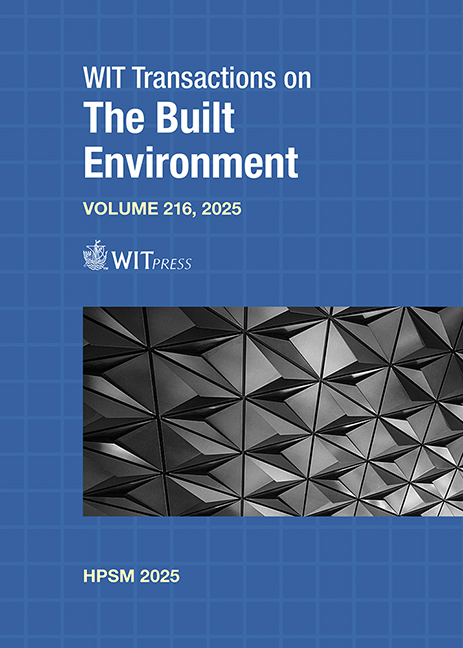DEALING WITH DISCRETE BINARY VARIABLES IN MINLP STRUCTURAL OPTIMIZATION
Price
Free (open access)
Transaction
Volume
216
Pages
12
Page Range
187 - 198
Published
2025
Paper DOI
10.2495/HPSM250161
Copyright
Author(s)
STOJAN KRAVANJA
Abstract
This paper presents the rational use of discrete binary variables in mixed-integer non-linear programming (MINLP) structural optimization. MINLP is a powerful optimization method that integrates both discrete and continuous variables while considering non-linear constraints. MINLP is used in many areas, such as chemical engineering, energy systems, supply chain and logistics and financial portfolio management. MINLP also plays a crucial role in structural optimization. In this area, it can be used to optimize various structures such as steel, concrete, timber and composite systems such as frames, bridges and trusses. However, structural optimization problems using MINLP often involve an immense number of binary variables, sometimes in the tens of thousands, making the problems computationally intractable. To get a handle on this complexity, the number of binary variables must be reduced to a manageable size. This can be achieved by techniques such as incorporating special logical constraints, implementing multilevel MINLP strategies or performing preselection of binary variables. This paper specifically examines how many binary variables can be eliminated by prescreening, a method that has been shown to be particularly effective. Five structural optimization case studies are examined: three large problems with up to tens of thousands of binary variables and two medium-sized problems with several hundred variables. The analysed structures include a steel truss, two hydraulic steel gates, a steel hall and a timber hall. The results show that pre-screening leads to a greater reduction in binary variables for large problems than for medium problems. On average, only about 5% of the original binary variables were retained in the MINLP optimization process after prescreening. This significant reduction contributed to a significant improvement in the convergence speed of the OA/ER algorithm.
Keywords
structural optimization, mixed-integer non-linear programming, MINLP, discrete optimization, sizing optimization, topology optimization, multilevel strategy, pre-screening





